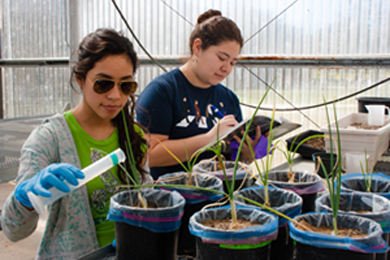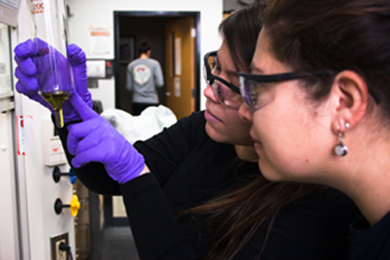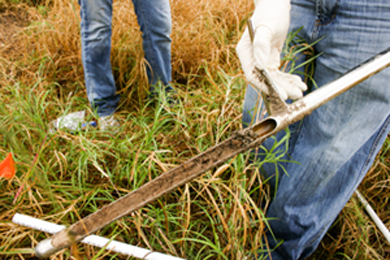Soil Science Society of America
5585 Guilford Road • Madison, WI 53711-5801 • 608-273-8080 • Fax 608-273-2021
www.soils.org
Twitter | Facebook
NEWS RELEASE
Contact: Hanna Jeske, Associate Director of Marketing and Brand Strategy, 608-268-3972, hjeske@sciencesocieties.org
Following tricky triclosan
May 25, 2016 - Most U.S. homes are full of familiar household products with an ingredient that fights bacteria: triclosan. Triclosan seems to be everywhere. When we wash our hands, brush our teeth, or do our laundry, we are likely putting triclosan into our water sources.
 Triclosan is in antibacterial soaps, detergents, carpets, paints, toys, and toothpaste. These products can feel comforting to germ-wary consumers. However, these products are only slightly better at removing bacteria than regular soap and water. And in antibacterial soaps, triclosan may not add any benefit to removing bacteria compared to regular soap and water.
Triclosan is in antibacterial soaps, detergents, carpets, paints, toys, and toothpaste. These products can feel comforting to germ-wary consumers. However, these products are only slightly better at removing bacteria than regular soap and water. And in antibacterial soaps, triclosan may not add any benefit to removing bacteria compared to regular soap and water.
The problem with triclosan is that it kills both good and bad bacteria. Studies also show that it contributes to medically necessary antibiotics becoming less effective. Triclosan is also toxic to algae and disrupts hormones in animals. This can hamper normal animal development. The FDA is currently investigating its impact on humans.
Most of the triclosan is removed in waste water treatment plants. However, a U.S. Geological Survey found the antibacterial in nearly 58% of freshwater streams.
“What you use has an impact even though you’re probably not thinking about it,” says Monica Mendez. Mendez is an associate professor in the Department of Biology and Chemistry at Texas A&M International University. She is interested in triclosan-contaminated streams and rivers. These streams often serve as the water source for crops.
“If  a river happens to be a source of irrigation, could triclosan possibly get into our food?” Mendez wonders.
a river happens to be a source of irrigation, could triclosan possibly get into our food?” Mendez wonders.
Mendez and her colleagues wanted to understand what happens to soils and plants watered with triclosan-contaminated water. They intentionally watered onions, tomatoes, and bare soils with triclosan-contaminated water in a long-term study.
After months of monitoring, they found triclosan in all edible portions of the tomato and onion plants. Fortunately, the amount they detected was safe for human consumption.
They also discovered that although the triclosan degraded quickly in the soil, it never completely disappeared. This contributes to a second problem. As triclosan breaks down, it can turn into other compounds that may be even more harmful. The breakdown of triclosan produces more effective hormone disruptors.
“It’s not just triclosan that we’re interested in,” says Mendez, “We also want to understand the possible products as degradation occurs. There’s still a lot of research that needs to be done. “
 Mendez is also concerned about how triclosan affects the bacteria that support plant growth in the soil. Triclosan targets all bacteria, not just disease-causing bacteria. Soils with healthy and diverse bacteria tend to be better for plants. However, triclosan can harm these microbial communities.
Mendez is also concerned about how triclosan affects the bacteria that support plant growth in the soil. Triclosan targets all bacteria, not just disease-causing bacteria. Soils with healthy and diverse bacteria tend to be better for plants. However, triclosan can harm these microbial communities.
“We know that triclosan decreases the diversity of bacterial communities,” says Mendez, “But we still need to figure out which good bacteria we are losing.”
Mendez’s study was the first to measure the long-term, repeated effects of triclosan on soil and plant communities. She hopes that further studies will track its impact on microbial communities.
“Because we’re all concerned about disease-causing bacteria, we generally ignore what happens below ground,” Mendez says. “Water and soil come together. We need to look at the quality of both, because food is important.”
Read more about Mendez’s research in Journal of Environmental Quality.
Journal of Environmental Quality publishes original research, reviews and analyses, and environmental issue articles that address anthropogenic impacts on water, soil, and the atmosphere and pertain to some aspect of environmental quality in natural and agricultural ecosystems.